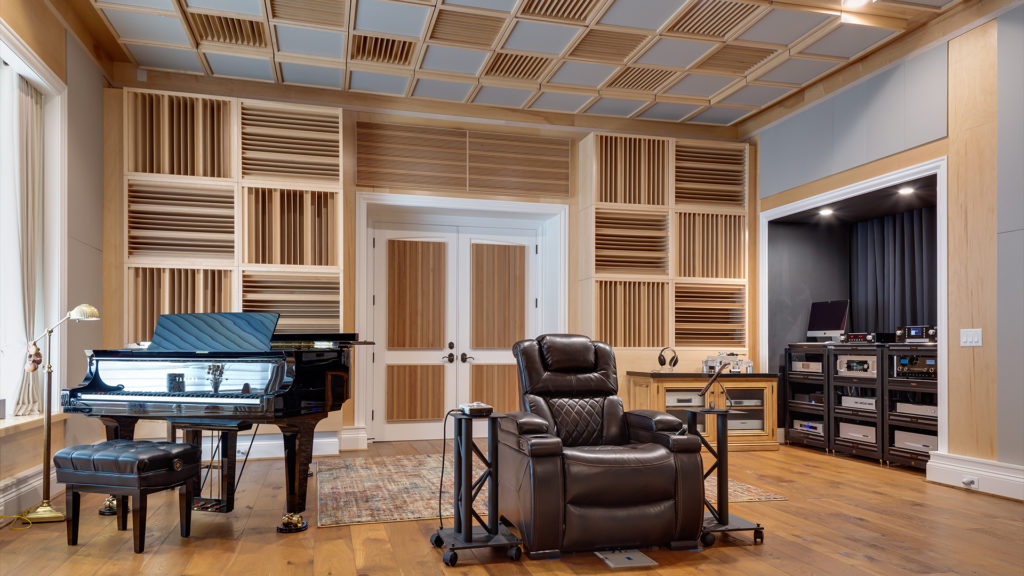
Table of Contents
Understanding Music Studio Foam and Its Types
The search term music studio foam has many meanings. Foam technology is divided into two major types. We have open celled foam and we have closed cell foam. Open celled foam is used for middle and high frequency sound absorption. Closed celled foam is used for support such as seat cushions and packaging material.
Music studio foam is designed to absorb middle and higher frequency energy. It is not designed to absorb low frequencies. Music studio foam is not a “bass trap” as some companies will try and get you to believe. Music studio foam must be designed for music and voice. Music and voice are much different than noise.

Importance of Absorption Rates and Levels
Music and voice requires a certain rate and level of absorption. You must have a smooth linear absorption curve so that you minimize the impact of reflections from room surface areas without over absorbing and creating a “dead” or over absorbed sound. When using any music studio foam one must consider the rate and level of absorption shown by the music studio foam. There must be a smooth transition from octave band to octave band.
There can be no spatial irregularities in the response curve. Examine the response curve of our foam technology at Acoustic Fields below. Notice in the response curve how smooth the rate and level is. The level of absorption is how low the frequency of absorption begins at. The rate of absorption is how much absorption at each octave band is achieved. Let’s examine three foam companies’ products.

Comparing Performance of Foam Technologies
At Acoustic Fields our foam technology you can see the performance in the graphic. We are the red line at the top. Notice how smooth the rate of absorption is. Notice how smooth it is from 125 hz. – 500 hz. This is the most critical frequency range when it comes to both music and voice.
Any treatment type that works in this frequency range must have a smooth and even rate of absorption. Notice the other two companies’ performance curves. Notice how their performance is severely lacking at the 250 hz. octave band. How can you treat a 250 hz. problem with technology that has a 250 hz. issue. You can’t.

Misconceptions About Foam as Bass Traps
Music studio foam is for middle and higher frequency treatment. It is not designed for lower frequency absorption. Companies will lie to you and tell you their foam is a “bass trap“. Open celled foam can not absorb low frequencies. It does work on air flow across its surface area. It does not work on sound pressure which is the process that must be implemented.
When we are examining small room acoustical treatment, we must focus on two main areas. We must concern ourselves with both pressure and reflections. Lower frequency energy below 100 hz. is created by wave energy. Middle and high frequency energy is determined by ray energy or reflections from the room boundary surfaces.

Managing Low Frequency and High Frequency Energy in Studios
When you think about wave energy, you can think about ocean waves. Ocean waves oscillate throughout the room and form pressure pockets which are termed room modes. Room modes can exaggerate certain frequencies and eliminate others completely. Ray energy or middle and high frequency energy can be thought of like sunshine.
The rays of energy are long and thin and behave more like sunshine. They strike the walls, floors, and ceilings of our audio rooms and produce reverberation which is defined as how long a sound stays around within the room after it has been sung, spoken, or played. Treating both wave and ray energy requires treatment types that conform to the laws of physics and not marketing speak.








Use whatever floor type suits your usage. Carpet should have a carpet pad under the carpet. Hardwood floors should have…
Hello. This article mentions choosing a sound absorbing carpet and a pad. Could you please give examples of products? I…
All noise must be measured for frequency and amplitude. The barrier design chosen to fix the noise issue is dependent…
Hi, Really interesting article. I've just had a prototype water filtration and softening (using filters, not salt) system installed in…